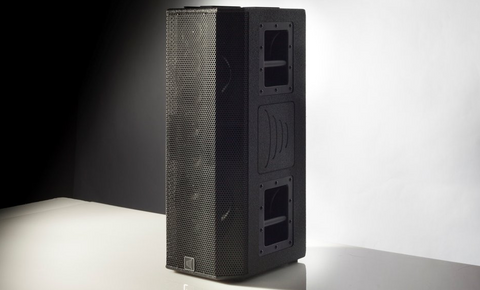-
Audio
-
Guitar
- Bass
-
Blog
-
SALE
- Financing
- Support
- SINCE 1946
February 02, 2017

When trying to choose the best speaker system for your application you may find yourself confronted by a bewildering list of specifications. You might be thinking, "I just need to pick a speaker that is a good fit for my power amplifier. Why does this say 600 watts in one place and 2400 watts in another? What do all these numbers and unfamiliar words mean?" There seem to be a lot of variables to consider but what do they tell you about the system's capabilities? Let's take a look at some commonly published specifications you might encounter and become familiar with their meaning and application.
What kind of speaker do you need?
One of the first decisions you'll want to make is selecting a speaker that is suitable for the signal you want to put through your speaker. If you want a basic full-range speaker that can handle both highs and lows (for example a stand-alone PA speaker or a keyboard amplifier system) you need to be able to cover the full spectrum of frequencies. On the other hand if you want to amplify bass or low frequencies only (as you might do with a sub-woofer system) you only need to reproduce a particular range of frequencies. The specification that tells you the range the system can reproduce efficiently is called Frequency Response. Often it will look something like this:
Frequency Response: 54 Hz – 20 kHz (-10dB)
Frequency refers to the speed at which the sound wave cycles. Slower frequencies produce lower notes (bass). The faster the wave cycles the higher the tone will sound (treble). In the spec above we are provided the lowest and highest frequencies the system reproduces effectively, so the low end covers down to 54 Hz (Hz or Hertz is a measurement of cycles per second) and the high end extends up to 20 kHz (kilohertz which refers to how many thousands of cycles per second). It is important to note that the speaker doesn't simply cut off the sound above and below these limits, but rather the limit indicates the frequency where the sound level produced drops below a certain threshold. Our sample specification notes (-10dB). Past that point the system will still produce sound, but the output sound level (volume) will continue to be lowered. At some point the system will not be useful going lower and putting high power at these frequencies far below specification can get into damaging the speaker. High end products may use more rigid guidelines for what they consider too low, so when comparing systems be sure you take the variations into account.
Sensitivity (1w @ 1m): 100dB
Another important specification to check is Sensitivity. What this tells you is how much sound pressure level, or SPL, the speaker can produce given a specified input signal level and at a specified distance from the speaker. This tells you how efficient it is. A speaker with a higher sensitivity will give you a higher output level from the same signal input, so you can get more volume out of the same amplifier with a high efficiency speaker. This is measured in decibels. In our sample spec the system yields 100dB from a 1 watt signal at a distance of 1 meter.
The sensitivity is also tied into the frequency response. The average level of the frequency response is the sensitivity, and the ends of the frequency response correspond to the amount down from the sensitivity. In our case the -10dB down from the 100dB would be the level at the ends. Our example system should be close to 90dB at 54Hz.
Maximum SPL: 128dB Cont/ 131dB Prog / 134dB Peak
Here we use the term “SPL” in the specification. This is the maximum SPL output the speaker can produce and remain within the rated specs for frequency response and power handling. How loud can this thing get? Notice, there are three different specs: Cont (continuous power), Prog (program power) and Peak power, which we'll explain in the next section.
Part 2 of this series will cover Power Ratings, multi-way crossover systems and coverage specs.
March 24, 2025
A standard setup for live music is usually placing loudspeakers on the left and right side of the stage. This is ideal for covering the audience out front of the stage. However, there are many instances where a venue may have seating to the side, behind, or even at the foot of the stage where your speakers cannot not cover. This article will review a few tips on placing additional speakers to fill in those areas.
March 07, 2025
If you are a sound professional and are looking to step up to a line array, a column or 10” line array might suite you. The efficiency and clarity of column and line arrays are the best way to overcome coverage issues as you can run overall volume lower without sacrificing coverage.
November 05, 2024
Sign up to get the latest on sales, new releases and more…
NoFraud Frequently Asked Questions
"Make a joyful noise unto the Lord all of the earth; make a loud noise and rejoice and sing praises. Sing to the Lord with the harp and the voice of the psalm." - Psalm 98:4-5
© 2025 Carvin Audio.
Carvin Corp.
POS and Ecommerce by Shopify
